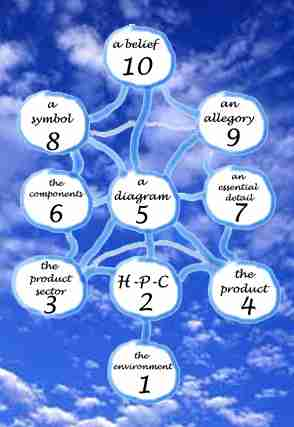|
|

design practice and theory
CLICK THE RED DOTS IN THE LOGO TO OPEN NEW PAGES AT RANDOM |
|
|

design practice and theory
CLICK THE RED DOTS IN THE LOGO TO OPEN NEW PAGES AT RANDOM |
| Any product and any design can be analyzed from a semiotic point of view. In other words: design language exists. Languages have a lexicon, a grammar and a semantics and design language is no exception, the big difference though is that each product, or group of similar products, seems to have its own language. All languages use signs to realize actual, pragmatic, communication and the analysis of these signs, or semiotics, becomes more and more the focus of the philosophy of language. |
| What I have suggested in the preceding pages, the possibility of an
application of the classification of signs by Peirce in design theory,
will be thereby tested. We will see if the process is useful in practice
or if it has to be modified or simplified. The analysis of an existing
product implies not only analysis of the receiving end of the communication
channel, the users part, but also its source, the creative part of the
designer. This semiotic process, or semiosis, underlying the product, will
be examined as a whole.
This ambitious and thus risky endeavor will here be exemplified by some considerations of a famous design product, Rietveld's red-blue chair from 1918, (of course we could have taken any other design product). I have selected this product because on one side it is linked with my personal curriculum and on the other hand because it represents an apparent functional product with many non rational aspects. These different expects will be highlighted in the following pages and will serve me to further develop some aspects of a hypothetical design theory. I used for the analyses of Rietveld's red blue chair, adapting them,
the ten categories of Peirceís theory of
signs, illustrated with ten circular images. I placed these images
in a configuration similar to those of the Sephiroth of the cabbalistic
Tree of Life with its internal connections.
|
| Floating in the sky we see here
the cabbalistic Tree of Life, with its internal connections, as the symbol
of the Torah. (note 1)
The arrangement of these ten signs indicates the order of the ten Sephirot, or levels of divine emanation. This supposed relation between Peirce and the Cabbala has been explained before. |
 |
| Designers like to translate words into images and I will try to this also for the single elements in the symbolic cabbala tree. Clicking the circular images gives access to explicative remarks and, sometimes, to further analysis. It will be wise to start from number 1. |

click on the circles for explanation
or else, find it in the following list
| 1 | earthly confusion |
|
2
|
the basic formula |
|
3
|
modern classic easy chairs |
|
4
|
meanings in Rietveld's chair |
|
5
|
the modular grid |
|
6
|
production |
|
7
|
the famous joint |
|
8
|
symbols in design |
|
9
|
narratives |
|
10
|
myths |
| note 1 | Gerschom Scholem, Zur Kabbala und ihrer Symbolik, Suhrkamp, Frankfurt, 1995 (1973), p.70ff. |